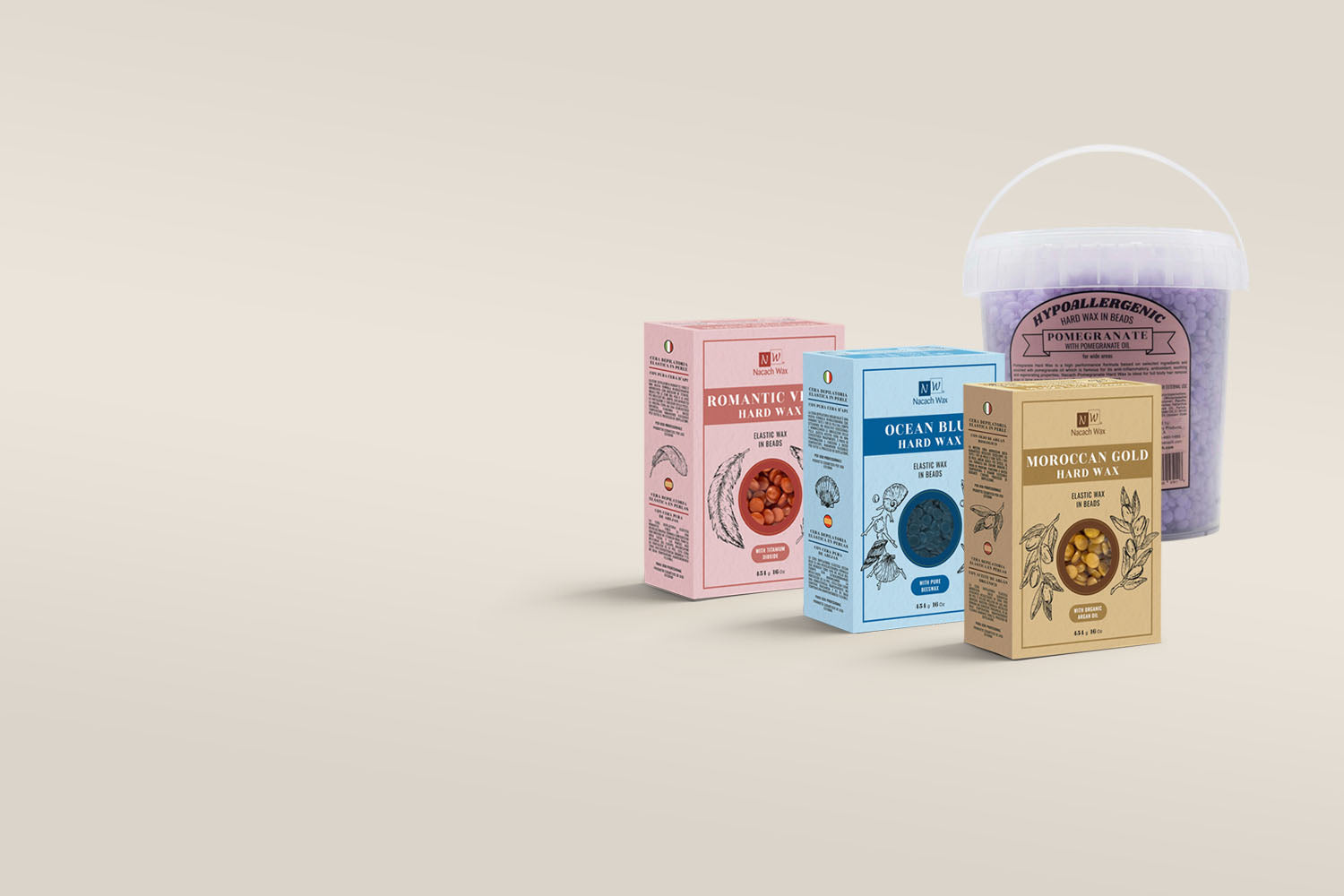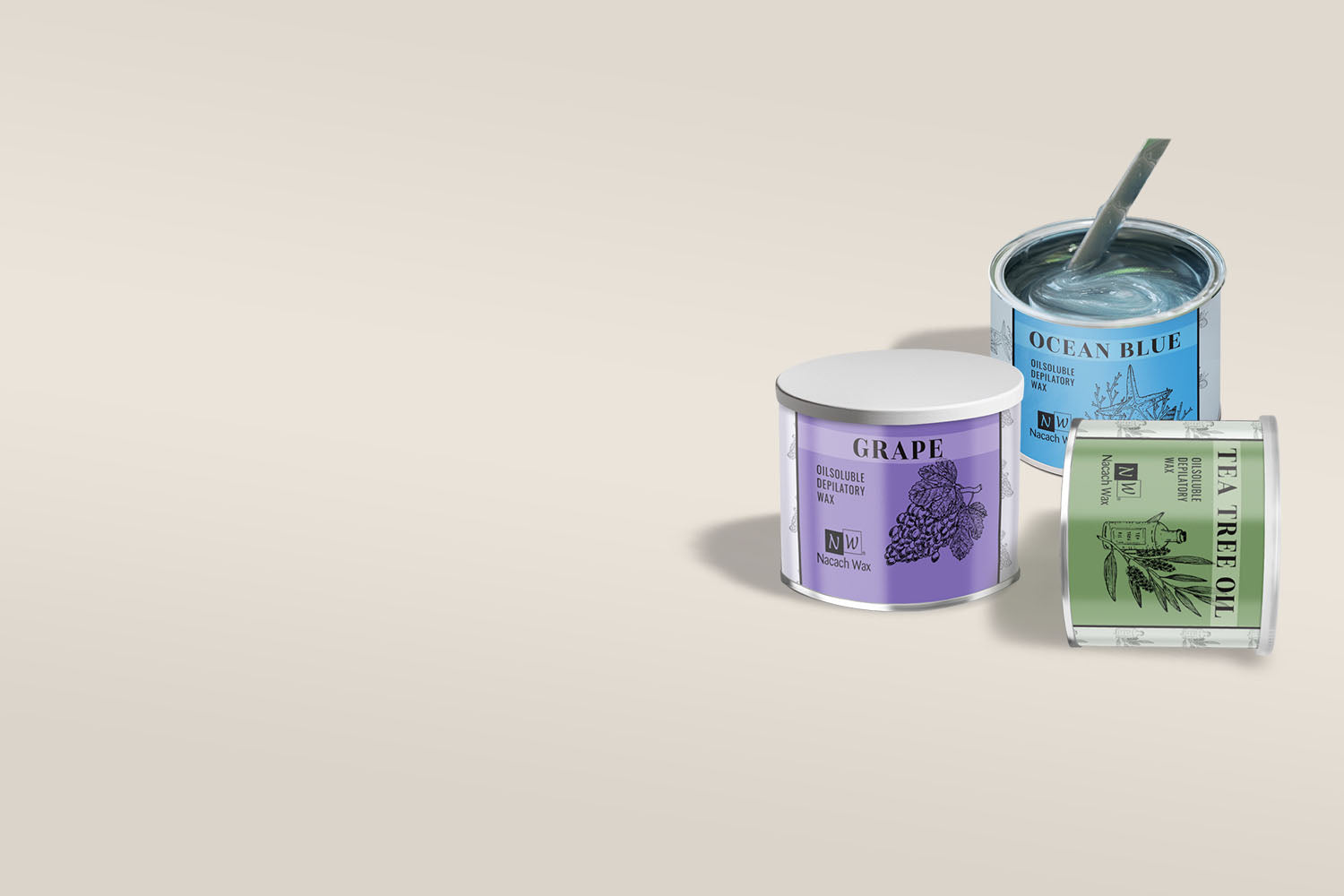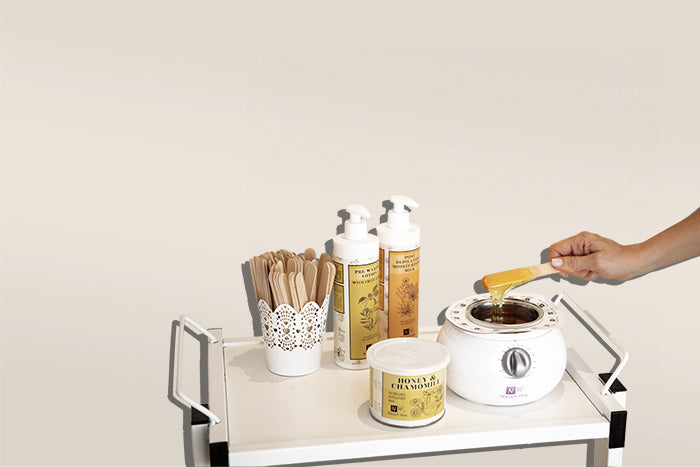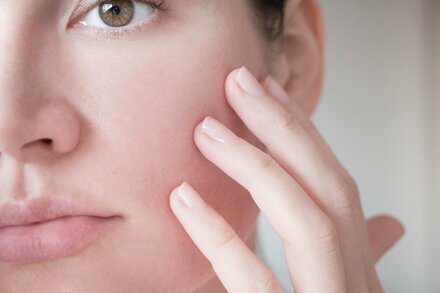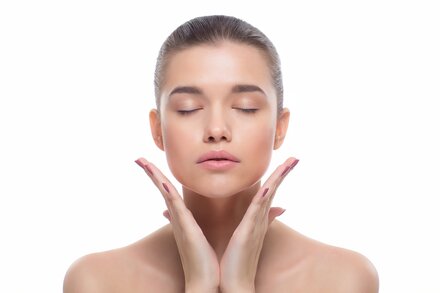All around me are familiar faces, oily places, shiny faces…
Well, if that's never happened specifically, it might now. But it's not super hard to combat shiny foreheads and noses. Oily skin is commonplace -- luckily, oily skincare is easy when you know how to handle it. Let's go over some simple oil-controlling routines.
So, What Causes an Oily, Shiny Face?

Everyone's skin is oily to some degree, as a natural moisturizer. Our bodies secrete it in the form of sebum -- you can thank your sebaceous glands for that. The glands are clustered differently on different parts of the body, which is why people may have an oily face, back, or scalp, yet no one has oily feet. It's apparent when sebaceous glands are working overtime. You'll realize if you have an oily skin type. Likewise, you'll notice if something, in particular, has triggered an overproduction of sebum. Unlike dry skin, which needs time to become noticeably cracked, scaley, or itchy, too much oil makes your skin slick, greasy, and shiny right away. So, if you're suddenly thinking, "Why is my nose so oily?" or "What's with this grease between my eyebrows?", it could be hormones or a new product or routine. Acne can also be a warning sign, a result of oil-clogged pores (or hormonal imbalance).
OK, What Triggers Excess Oil?
Simply put, it's often irritation. Irritation can cause normal type skin to act up occasionally, but it regularly wreaks havoc on an already oily skin type. That's also why it's possible to have dry-oily skin. Dry skin is not happy skin, which means those sebaceous glands start cranking up oil production in an effort to moisturize.A skincare routine for oily skin seeks to minimize excess oil first and then reduce the reappearance of shine. It will not forever grant you a non-oily skin type if you avoid all the bad things and do all the good things. With that out of the way, let's take a closer look at some of these triggers.
- Tactile irritation: Scrubbing away at an oily face actually won't help matters, whether you're cleansing or drying. You'll be oil-free only momentarily before it's back with a vengeance to try and replace what you’ve angrily banished.
- Environmental irritation: Sun damage isn't always visible to the naked eye, but your skin notices. Sebum is meant to protect as well as moisturize, and it's separate from sweat, so the problem won't be solved if you just step out of the heat. High humidity is also counter-productive.
- Ingredient irritation: You may be using a product that's a little too harsh as you do battle against your skin type, or your skin may be sensitive as well as oily. For example, alcohol-based products are drying when you want to try and retain moisture to prevent more oil production.
- Hormones also play a role: The usual skin care for oily skin will still apply here, but you may be interested in addressing or investigating the underlying cause more closely. Consider consulting a dermatologist.
How to Make Skin Less Oily

- Undo what you're doing that exacerbates oily skin—scrubbing your face?
- Quit it. Dump the alcohol-based and oily skin products (oil-based products, for obvious reasons, are not super helpful -- but we'll discuss a couple of exceptions).
- Instead of roughhousing your skin, let proper products for oily skin do the hard work. Salicylic acid breaks up sebum without being harsh and even temporarily slows down production. Up to 2% or so is the recommended threshold.
- Gently cleanse and moisturize every day at least once. Twice would be optimal: when waking up and going to sleep, but more if you've exercised or been outside sweating. When you cleanse, always moisturize afterward to replace lost hydration -- products like Nacach moisturizing milk or post wax refreshing gel get the job done with no extra ingredients to tempt irritation.
- Pat dry rather than rubbing. When you're applying products, be conscious of this as well. Don't go overboard on rubbing things in and have a gentle touch as much as possible.
- Use sunscreen when you go out. You can try a moisturizer that includes some sun protection or go for a dedicated mineral sunscreen. Aside from complementing your skin type (no extra oil), they're overall gentler on the skin, and many don't leave behind residue.
- If you're a makeup wearer, switch to mineral, powder, or even water-based. You definitely don't have to change your habits too much if you're against it but do try to apply with a lighter touch on hot days.
- Exfoliate once a week. It helps clear pores and keep them clear going forward. Mild chemical exfoliants -- such as this Nacach pre-wax lotion with fruit acids or, again, salicylic acid formulas -- help remove dead skin simply with an application, not through friction.
- Separate good oils from bad -- they aren't all created equal, but it's impossible to know what's the best oil for oily skin just by looking at the ingredients. Don't worry, we've got you covered.
You'll want to avoid oils that can clog pores, like coconut, apricot kernel, linseed, avocado. However, tea tree, aloe, safflower, and jojoba can be downright useful oils for oily skin.
Some oils are slightly more comedogenic because they contain more oleic fatty acid, while more linoleic fatty acid roughly equals less comedogenic, but all these oils do contain both. It might take some trial and error to find which your skin responds to best.
Takeaway
Oily skin is a persistent, annoying problem, but also one with rather simple solutions. You can't turn your oily skin type to a normal skin type with these skincare routines, but you can stop looking in the mirror and hearing Mad World (Oil Sheen Cover).When all else fails, always carry blotting paper for quick clean-ups. Or take a page from the waxing book and try some Nacach cornstarch powder to dry excess oil and leave skin smooth and soft, at least for a little while.


